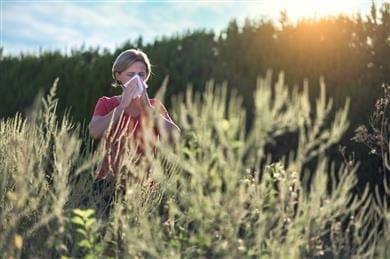RONSE, BELGIUM – Devan’s allergen control technology, known as Purissimo™, has been found effective against allergens from pollen. The technology had already been proven to significantly reduce the amount of allergens from house dust mites and pets (cats & dogs).
“Allergens are small protein molecules, which can cause allergic reactions and asthma. All allergy sufferers are different when it comes to their sensitivity to allergens”, says Sofie Depluverez, PhD researcher at Devan. “However, few people are only allergic to a single allergen – and the effects of multiple allergens can add up. The key to reducing and even eliminating symptoms is to reduce your exposure to the allergens themselves.”
Allergy threshold
When people move into a house or bring in a new dog, the number of allergens starts to rise. In the beginning there are little to none, so the allergy threshold causing symptoms is far from being reached. Nobody is suffering any reaction at this stage.
“As time goes by, the various allergens start to build up inside the house, certainly when ventilation is limited”, Depluverez continues. “As the allergen concentration increases (especially in combination with seasonal allergens such as pollen), the allergy threshold may be reached if no allergen reduction measures are in place.”
Purissimo™
Purissimo™ is a natural allergen control technology that significantly reduces allergens from pet dander, dust mites and pollen in textiles throughout the home. The technology is based on encapsulated probiotics, which are naturally occurring microorganisms similar in kind to those you can find in probiotic yogurt, tempeh, kombucha, …
Inactive probiotics (spores) are encapsulated and integrated onto the textiles. Friction opens the microcapsules and releases the spores. The spores absorb humidity and self-activate. They are transformed into probiotic bacteria that start to consume the allergens.
“As the probiotics consume the allergens, exposure is gradually reduced to below threshold levels”, Depluverez adds. “Therefore, individuals with respiratory allergies will be exposed to fewer ‘attacks’ and perceive a better well-being.”
Interested to learn more? On Tuesday, March 23 at 3 p.m., Devan will elaborate on this technology in a webinar titled ‘Functionalizing textiles for post-vaccination consumers: Hygiene, sustainability & a natural approach’ during Home Textiles Week (a virtual NY Home Fashions Market).

